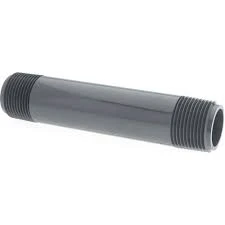-
Cangzhou Yulong Steel Co., Ltd.
-
Phone:
+86 13303177267 -
Email:
admin@ylsteelfittings.com
- English
- Arabic
- Italian
- Spanish
- Portuguese
- German
- kazakh
- Persian
- Greek
- French
- Russian
- Polish
- Thai
- Indonesian
- Vietnamese
- Zulu
- Korean
- Uzbek
- Hindi
- Serbian
- Malay
- Ukrainian
- Gujarati
- Haitian Creole
- hausa
- hawaiian
- Hebrew
- Miao
- Hungarian
- Icelandic
- igbo
- irish
- Japanese
- Javanese
- Kannada
- Khmer
- Rwandese
- Afrikaans
- Albanian
- Amharic
- Armenian
- Azerbaijani
- Basque
- Belarusian
- Bengali
- Bosnian
- Bulgarian
- Catalan
- Cebuano
- China
- China (Taiwan)
- Corsican
- Croatian
- Czech
- Danish
- Esperanto
- Estonian
- Finnish
- Frisian
- Galician
- Georgian
- Kurdish
- Kyrgyz
- Lao
- Latin
- Latvian
- Lithuanian
- Luxembourgish
- Macedonian
- Malgashi
- Malayalam
- Maltese
- Maori
- Marathi
- Mongolian
- Myanmar
- Nepali
- Norwegian
- Norwegian
- Occitan
- Pashto
- Dutch
- Punjabi
- Romanian
- Samoan
- Scottish Gaelic
- Sesotho
- Shona
- Sindhi
- Sinhala
- Slovak
- Slovenian
- Somali
- Sundanese
- Swahili
- Swedish
- Tagalog
- Tajik
- Tamil
- Tatar
- Telugu
- Turkish
- Turkmen
- Urdu
- Uighur
- Welsh
- Bantu
- Yiddish
- Yoruba

Nov . 10, 2024 13:55 Back to list
Understanding Flange B16.5 Class 150 Specifications for Optimal Pipeline Performance
Understanding Flange B16.5 Class 150 A Key Component in Piping Systems
Flanges play an essential role in the assembly and functionality of piping systems across various industries. Among the many standards for flanges, the B16.5 Class 150 is a widely recognized specification that outlines the dimensions, materials, and pressure ratings for pipe flanges. Understanding this standard is vital for engineers, designers, and technicians involved in the design and maintenance of piping systems.
The B16.5 standard is part of the American Society of Mechanical Engineers (ASME) specifications, which are crucial for ensuring the safety, reliability, and effectiveness of piping systems. Class 150 flanges are designed to handle certain pressure and temperature ratings, making them suitable for a range of applications. Specifically, Class 150 flanges can typically handle pressures up to 150 psi (pounds per square inch) at a temperature of 100°F (38°C), with the pressure rating decreasing as temperature increases. This flexibility makes Class 150 flanges ideal for systems operating under moderate pressure and temperature conditions.
Understanding Flange B16
.5 Class 150 A Key Component in Piping SystemsIn terms of dimensions, the B16.5 Class 150 flanges follow a specific set of criteria, ensuring compatibility with corresponding pipes and fittings. The dimensions include diameter, thickness, and bolt hole pattern, all of which must be adhered to achieve a proper seal and prevent leaks. For instance, these flanges typically feature a raised face configuration, maximizing the contact area for the sealing surface and ensuring a tight fit.
flange b16 5 class 150

Installation of Class 150 flanges requires careful consideration of several factors. Proper alignment during installation is crucial to achieving a leak-free joint. Additionally, the use of appropriate gaskets can enhance the integrity of the seal. Gaskets are placed between the flanges to create a barrier against leakage and help maintain optimal pressure within the piping system. It is also important to adhere to the torque specifications when tightening the bolts to avoid over-tightening, which can lead to flange warping or failure.
The applications for B16.5 Class 150 flanges are diverse and span many industries. They are commonly used in water supply and distribution systems, oil and gas pipelines, chemical processing plants, and power generation facilities, among others. Their ability to withstand moderate pressures makes them versatile components in many piping layouts.
In conclusion, the Flange B16.5 Class 150 is a critical component in various piping systems, providing a reliable means of connecting pipes and fittings while maintaining pressure integrity. Understanding its specifications, material options, dimensions, and proper installation practices is essential for engineers and technicians involved in piping system design and maintenance. As industries continue to evolve and demand more sophisticated piping systems, the relevance of standards like B16.5 Class 150 will only increase, underscoring the importance of familiarity with such specifications for professionals in the field.
By ensuring compliance with established standards, professionals can help enhance the safety, reliability, and efficiency of piping systems, contributing to the overall effectiveness of industrial processes.
Latest news
-
ANSI 150P SS304 SO FLANGE
NewsFeb.14,2025
-
ASTM A333GR6 STEEL PIPE
NewsJan.20,2025
-
ANSI B16.5 WELDING NECK FLANGE
NewsJan.15,2026
-
ANSI B16.5 SLIP-ON FLANGE
NewsApr.19,2024
-
SABS 1123 FLANGE
NewsJan.15,2025
-
DIN86044 PLATE FLANGE
NewsApr.19,2024
-
DIN2527 BLIND FLANGE
NewsApr.12,2024
-
JIS B2311 Butt-Welding Fittings LR/SR 45°/90° /180°Seamless/Weld
NewsApr.23,2024











